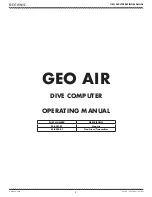
13-10
Status Structure
Programming example — set MSS (B6) when error occurs
The first command of the following sequence enables EAV (error available). When an invalid
command is sent (line 4), bits B2 (EAV) and B6 (MSS) of the status byte register set to 1. The
last command reads the status byte register using the binary format (which directly indicates
which bits are set). The command to select format (FORMat:SREGister) is documented in Table
13-2. To determine the exact nature of the error, you will have to read the error queue (see
“Queues”).
*CLS
‘ Clear Error Queue.
*SRE 4
‘ Enable EAV.
FORM:SREG BIN
‘ Select binary format.
BadCommand
‘ Generate error.
*STB?
‘ Read Status Byte Register.
NOTE
An example program to demonstrate serial polling (Generating SRQ on buffer full) is
provided in Appendix E.
Summary of Contents for 6514
Page 203: ...14 CommonCommands...
Page 207: ...15 SCPISignalOriented MeasurementCommands...
Page 235: ...18 PerformanceVerification...
Page 254: ...19 Calibration...
Page 274: ...20 RoutineMaintenance...
Page 278: ...A Specifications...
Page 282: ...B StatusandErrorMessages...
Page 288: ...C GeneralMeasurement Considerations...
Page 294: ...D DDCEmulationCommands...
Page 299: ...E ExamplePrograms...
Page 306: ...F IEEE 488BusOverview...
Page 320: ...G IEEE 488andSCPI ConformanceInformation...
Page 324: ...H CalibrationOptions...
















































